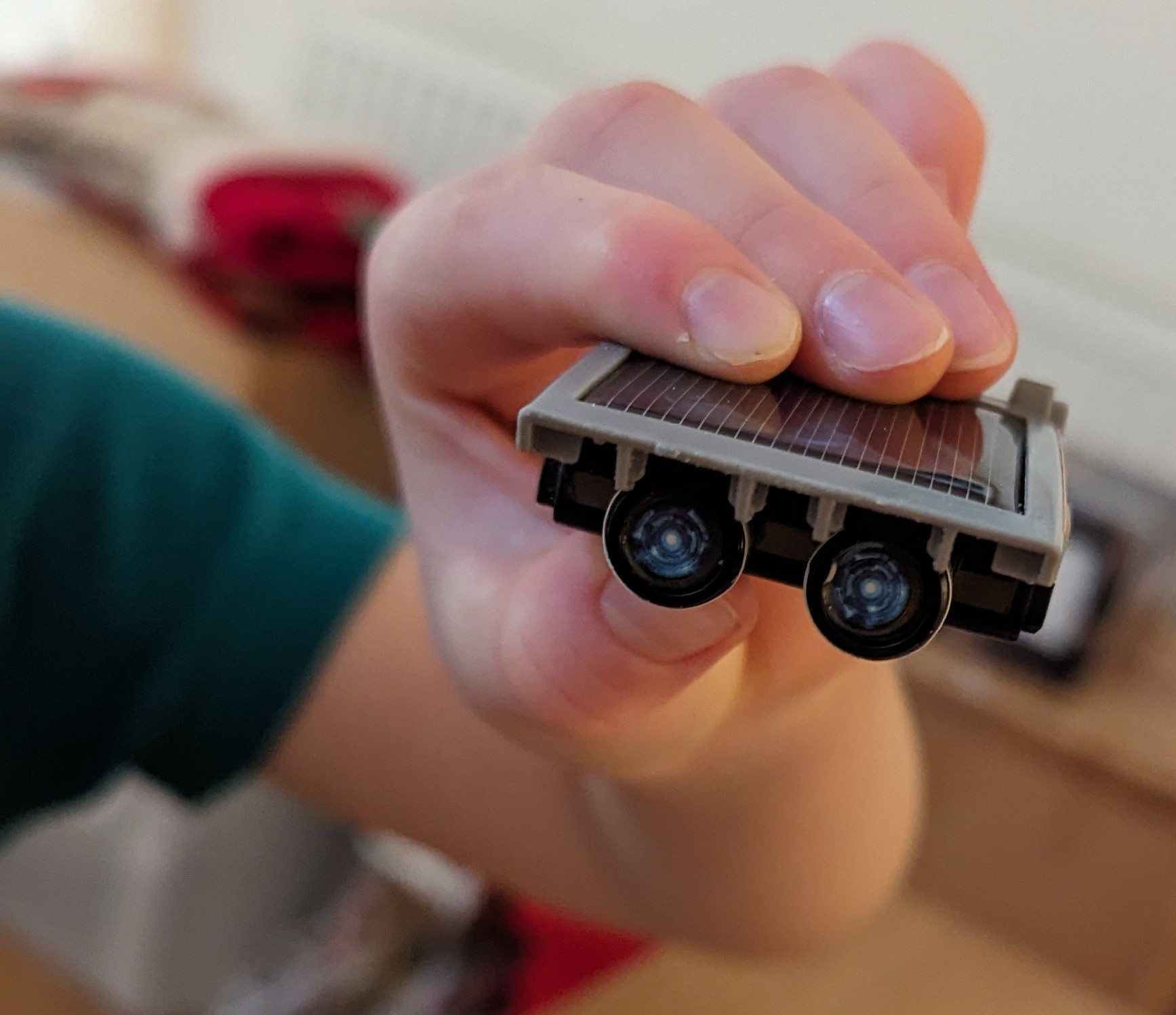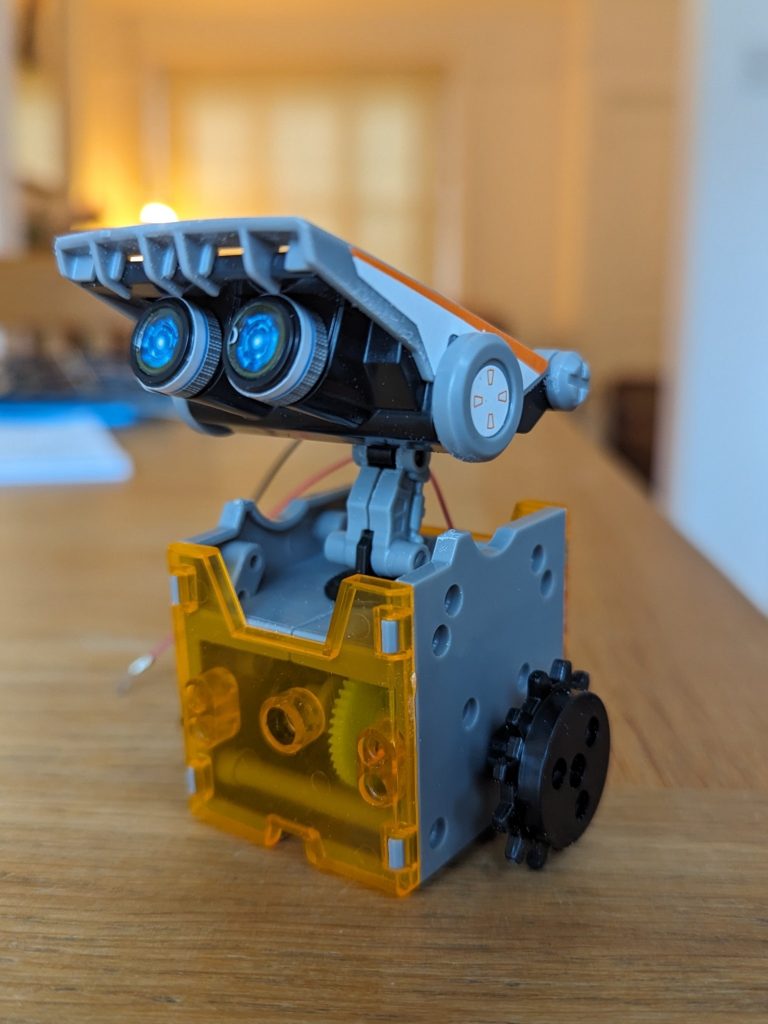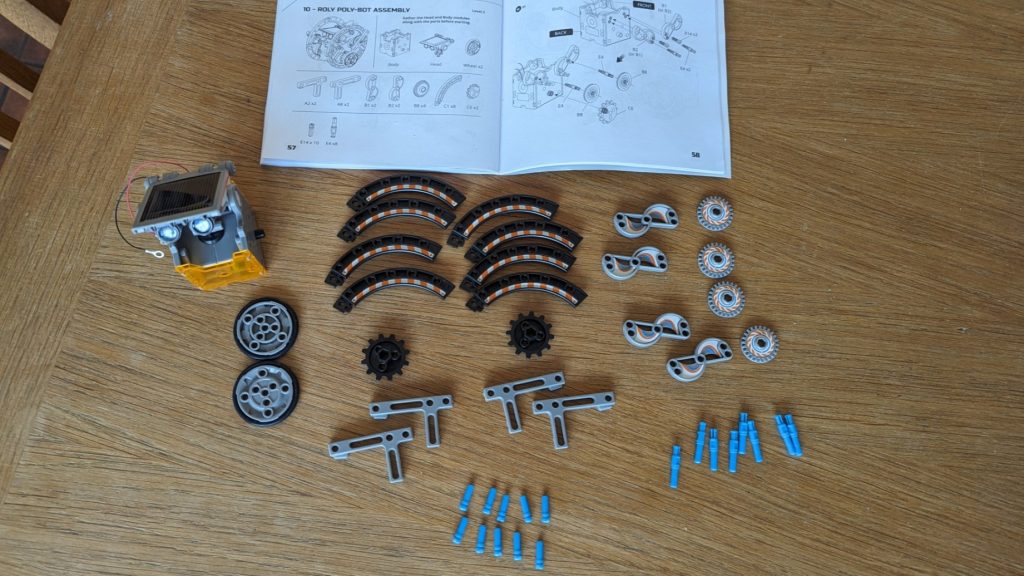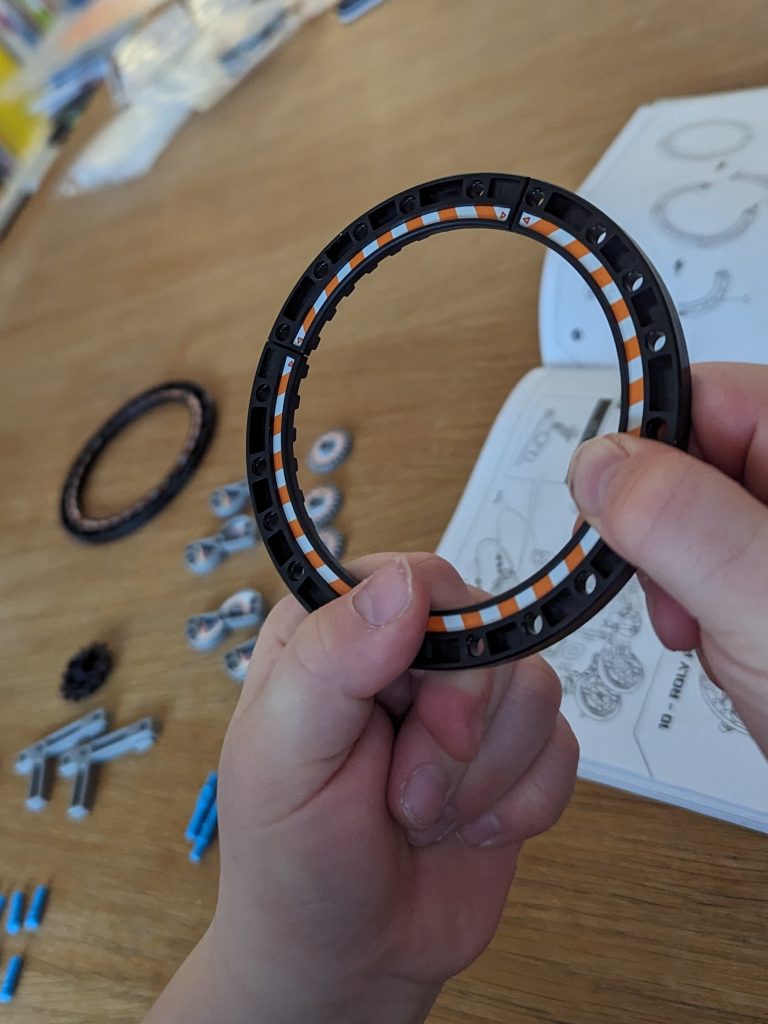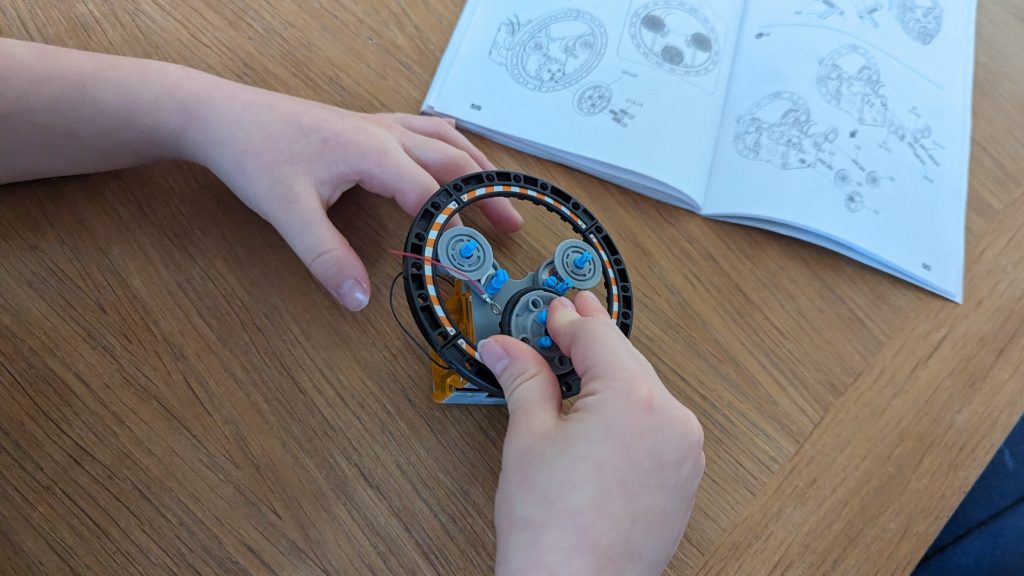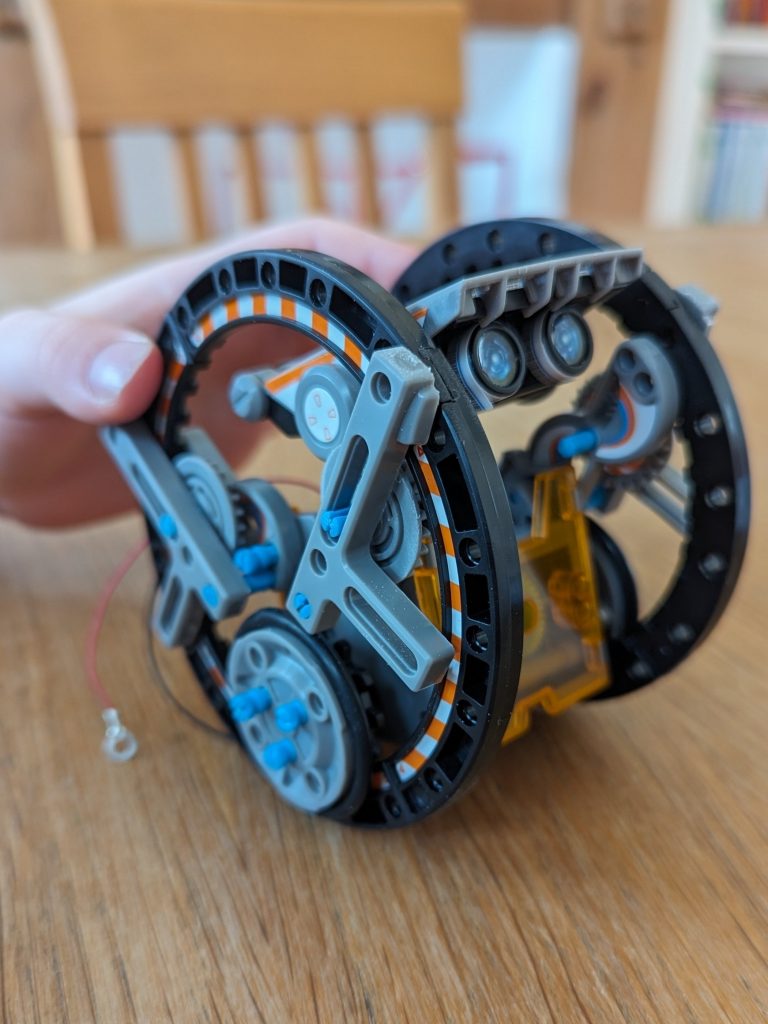Teach STEAM Literacy by Building a Robot
This year’s List to Santa included a request for “science projects” (hmmmm, I wonder where they got that idea from?) and the big day yielded, among others, this solar robot in kit form. The kit says quite clearly that it’s designed for kids aged 8 and above and mine are a little younger than that, so they needed a fair bit of help. However, it should be feasible for older kids with good concentration spans to complete these independently.
But let’s face it, that wasn’t the point of building it! There’s a great opportunity here, as with lots of other STEAM-type toys and projects, to kick off some conversations about things like gears, electrical circuits and solar power. As we were figuring out how to assemble the robot, we talked about how the gears work together to make the robot move, how the circuit connects the solar panel to the motor, and how the solar panel converts sunlight into electrical energy. We even had a side conversation about electric cars and the environment and how solar power needs to be stored in batteries so we can have electricity when the Sun doesn’t shine.
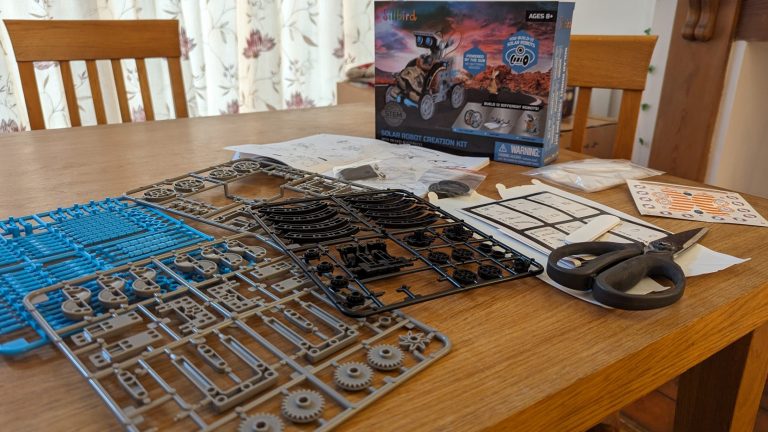
So many pieces – let’s build!
The solar robot kit includes enough pieces to build 12 different types of robots that supposedly can move on land or water (we are yet to test this). It can feel a bit daunting after opening the box and seeing all 190 pieces (!) spread out alongside a fairly dense-looking instruction manual, but I’ve seen Lego kits that look just as complicated. One grumble I have is that the manual mentions a “diagonal or spruce cutter” that is needed to cut away the various parts for assembly, but this wasn’t mentioned anywhere else. Luckily, a sturdy pair of kitchen scissors did the trick.
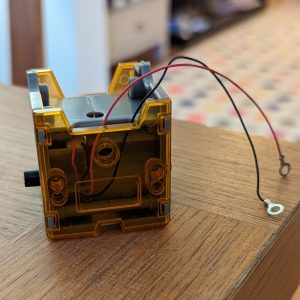
You start by assembling a couple of common modules: the “body” which houses the motor and the gears, and the “head” which has the solar cell. To be totally honest, I did about 80% of the work, but there was more than enough to keep the kids interested and occupied. Besides “teaching moments” there were plenty of opportunities to get them to read the instructions carefully and to interpret the diagrams that show how the pieces are meant to fit together.
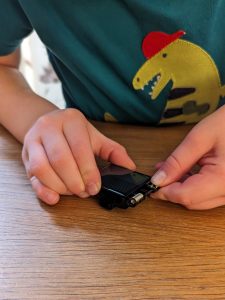
Your first big test comes after you’ve fitted the body and head together – it’s time to test that the solar cell actually works and can deliver enough power to make the gears move! The winter light we have at the moment is far too weak to power the robot, and we had a few moments wondering whether we had connected something incorrectly forcing us to disassemble the whole lot. Luckily, placing the cell near a bright lightbulb proved we’d done a good job; it just remains to be seen whether we’ll ever get enough sunlight to see our little robot in action.
Because the kit comes with enough pieces to build 12 different robot designs, this means that at any given time, your robot is only using a subset of the whole kit. Once thing I did appreciate was the inclusion of several labelled bags to keep the pieces you’re not using so you can find the ones you need easily again.
Was it worth it?
Well, you get what you pay for – this kit costs about £20 and the solar cell needs a very bright light to deliver enough power to the motor. We’ll see once summer gets here whether sunlight is enough but, for the Conflicted Family, it was a good investment of money and time. A lot of the fun was in following the instructions as a team and talking about some of the STEAM concepts that were sparked off (see what I did there?) during that process. I think the fact that you can convert it into 12 different robots will also help give it some longevity.
I’d love to hear what you think if you decide to try it, or whether you have any suggestions for similar toys or projects that can be used to have those STEAM-related discussions with your kids.
This post contains an affiliate link. As an Amazon Associate that means that, if you click on the link and end up purchasing the item, Conflicted Parent will receive a small commission at no additional cost to you.

